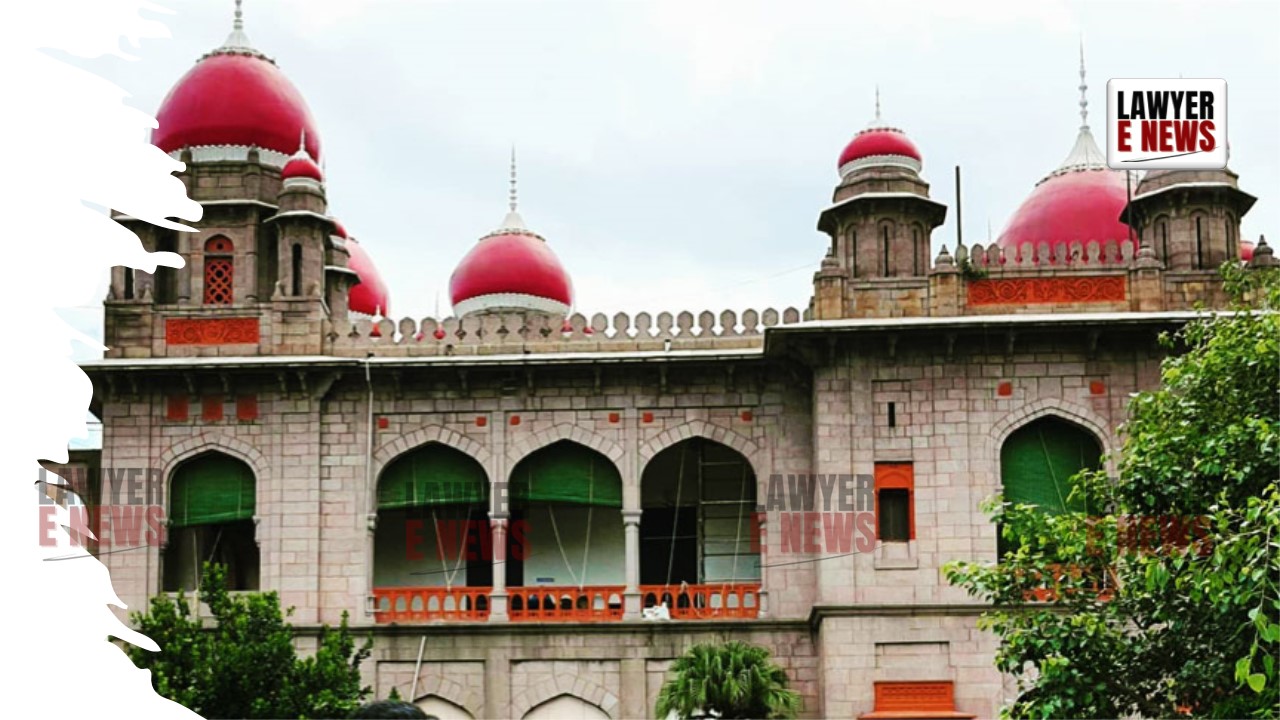-
by Admin
17 December 2025 4:09 PM



In a significant judgment Telangana High Court upheld the acquittal of two individuals accused of murder and theft under Sections 302 and 379 read with Section 34 of the Indian Penal Code (IPC). The bench, comprising Hon’ble Justice P. Sam Koshy and Hon’ble Justice Namavarapu Rajeshwar Rao, emphasized the principle that circumstantial evidence must form an unbroken chain leading to the sole conclusion of guilt. The court ruled that the prosecution failed to meet the stringent evidentiary requirements in a case entirely based on circumstantial evidence.
The case stemmed from an alleged murder on the night of May 7–8, 2021, with accusations of theft of ornaments from the deceased. The trial court had acquitted the accused on March 28, 2024, citing insufficient evidence, prompting the State of Telangana to file an appeal under Section 378 of the Code of Criminal Procedure (CrPC). The High Court, however, dismissed the appeal, stating, "Suspicion, however strong it may be, cannot take the place of proof beyond reasonable doubt."
The prosecution relied on circumstantial evidence and the "last seen theory" to implicate the accused. Referring to the established jurisprudence on circumstantial evidence, the court cited the seminal judgment in Sharad Birdhichand Sarda v. State of Maharashtra (1984), where it was observed, "The circumstances from which the conclusion of guilt is to be drawn should be fully established, and all the facts so established should be consistent only with the hypothesis of the guilt of the accused."
In the present case, the High Court noted that the prosecution failed to establish a complete and conclusive chain of events. "The chain of evidence must be so complete as not to leave any reasonable ground for the conclusion consistent with the innocence of the accused," the bench remarked. It further held that the gaps in the evidence created significant doubts about the prosecution's case.
A key element of the prosecution’s case was the testimony of P.W.4, who claimed to have seen the accused in the company of the deceased on the night of the incident. However, the court found the testimony to be inconsistent and unreliable. "The statement of P.W.4 lacks clarity and corroboration. His inability to distinctly recall the interaction between the accused and the deceased casts doubt on the reliability of the last seen theory," the court observed.
The judgment further stated that circumstantial evidence must meet the highest standards of proof, as suspicion cannot form the basis of a conviction. "Certainly, it is a primary principle that the accused must be—and not merely may be—guilty before a court can convict," the bench noted, quoting Sharad Birdhichand Sarda.
The prosecution also relied on the recovery of ornaments allegedly belonging to the deceased, which were identified by P.W.1, the son of the deceased. However, the court ruled that the identification process was inadequate. "Mere oral testimony without corroboration by forensic or distinct markings on the ornaments is insufficient to establish their ownership," the court stated.
The judgment highlighted that the prosecution's failure to meet evidentiary standards weakened its case. "In cases involving recovery of stolen items, proper identification is crucial. The prosecution failed to produce concrete evidence linking the recovered ornaments to the deceased," the court remarked.
The High Court reiterated the limited scope of appellate intervention in cases of acquittal. It cited the Supreme Court’s observation in Ballu and Another v. State of Madhya Pradesh (2023): "It is settled law that interference with an acquittal requires evidence of perversity, misapplication of law, or disregard for material evidence. Suspicion cannot substitute proof beyond reasonable doubt."
The bench emphasized that the presumption of innocence is further strengthened in cases of acquittal. "An appellate court should be reluctant to interfere with a trial court’s judgment unless it is clearly perverse or contrary to law. In this case, the trial court rightly found that the prosecution had not proven its case beyond a reasonable doubt," the court stated.
Concluding the judgment, the court remarked, "The prosecution’s case rests on circumstantial evidence, and in such cases, the highest degree of scrutiny is required. The circumstances, as presented, fail to exclude every hypothesis except the guilt of the accused. Suspicion, no matter how strong, cannot fill the gaps in evidence."
The appeal was dismissed, with the court upholding the trial court's finding that the prosecution had failed to prove its case. "For the aforesaid reasons, we find no error in the trial court’s judgment. The appeal is, accordingly, rejected," the judgment read.
Date of Decision: December 2, 2024
